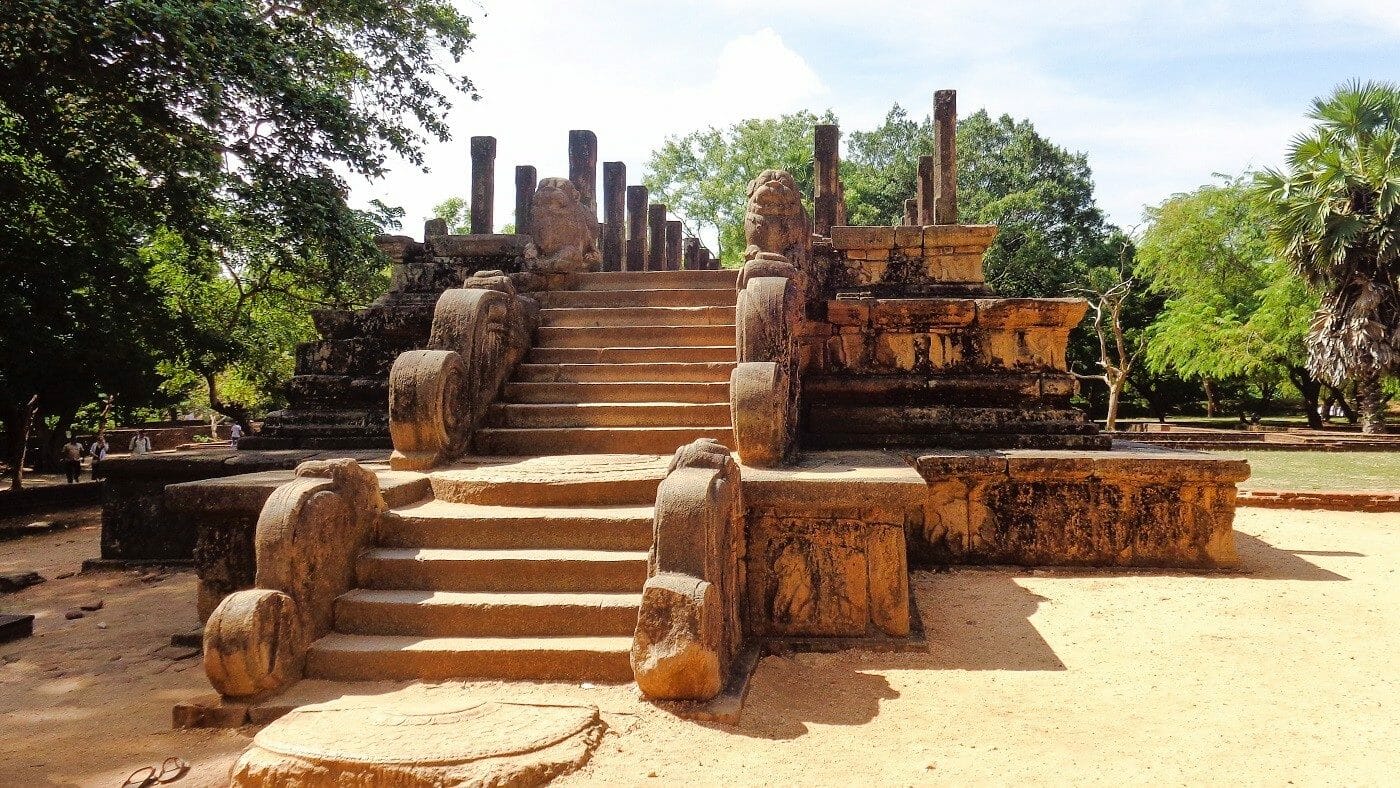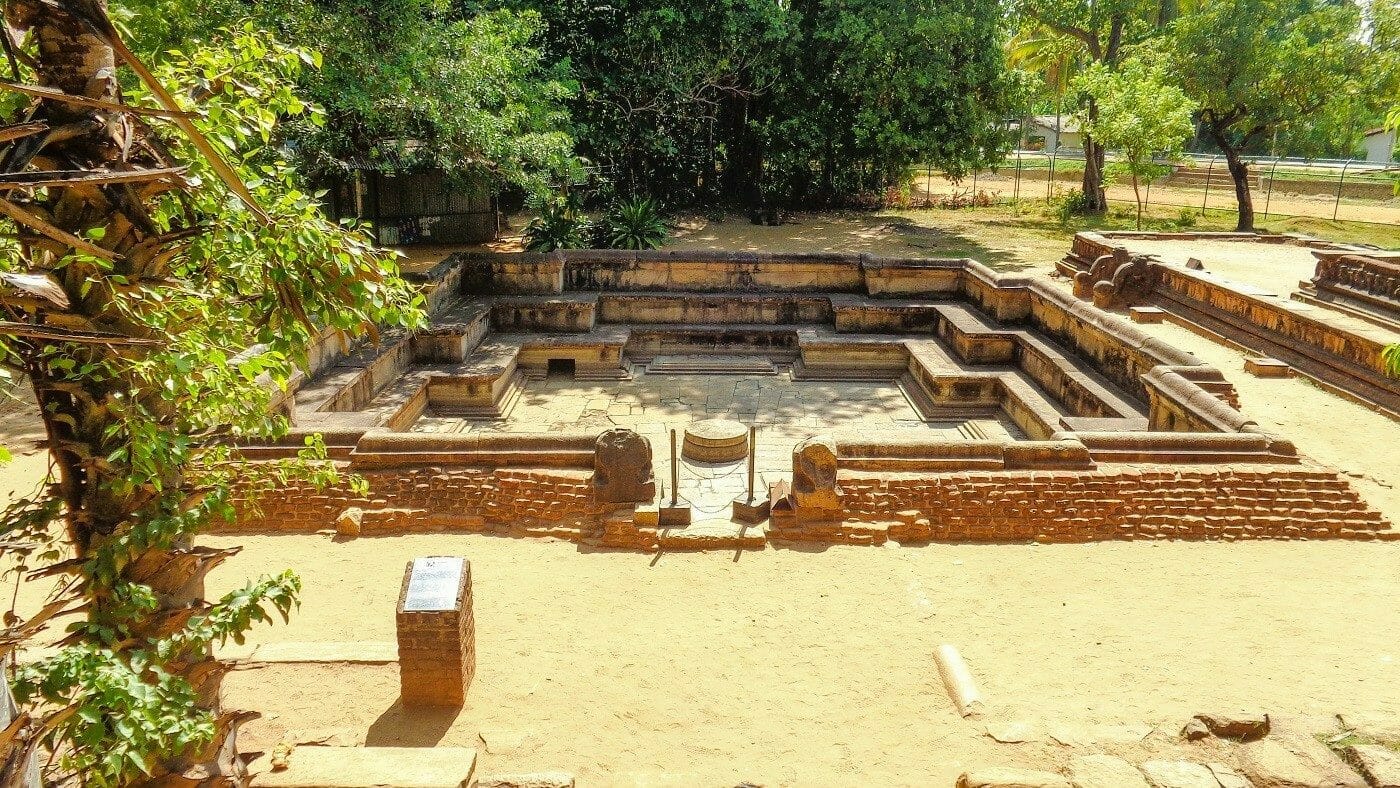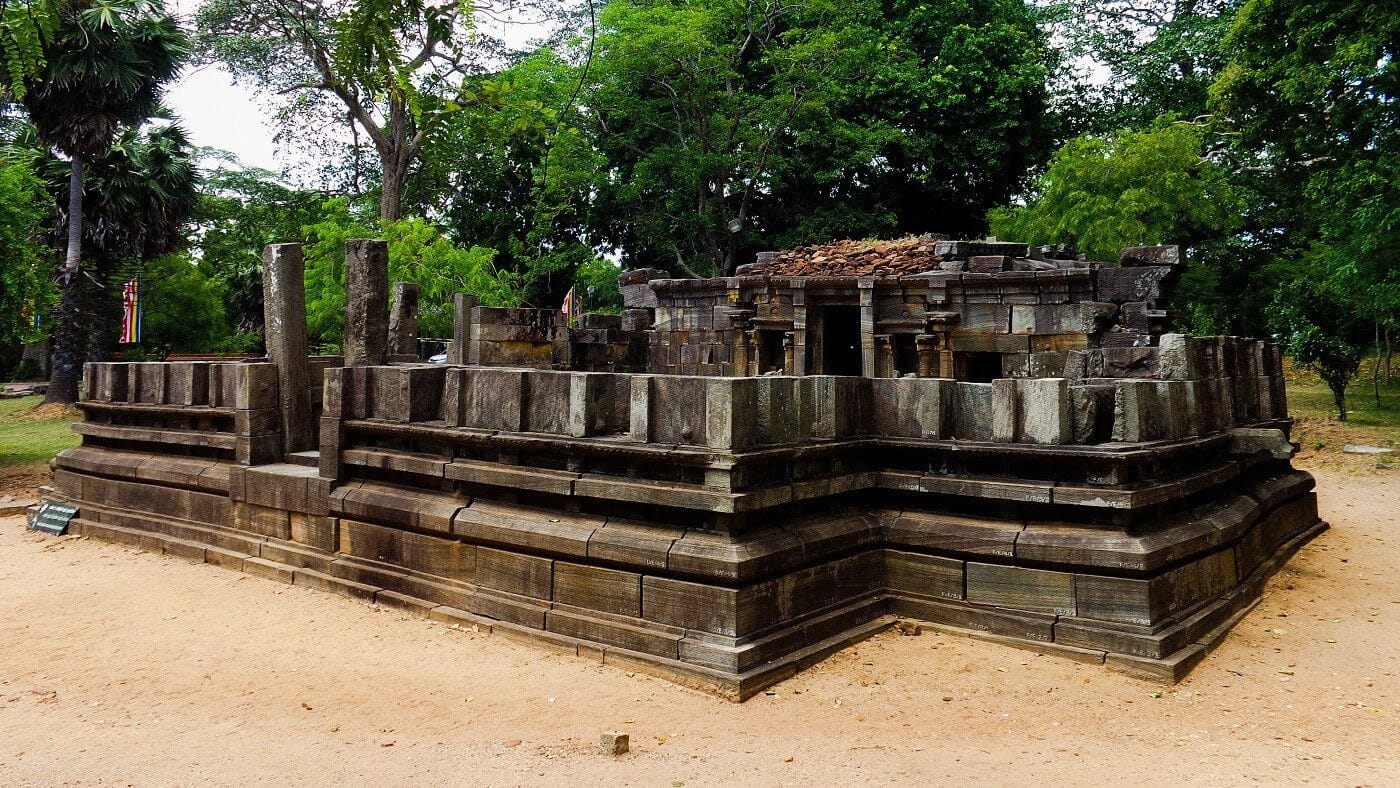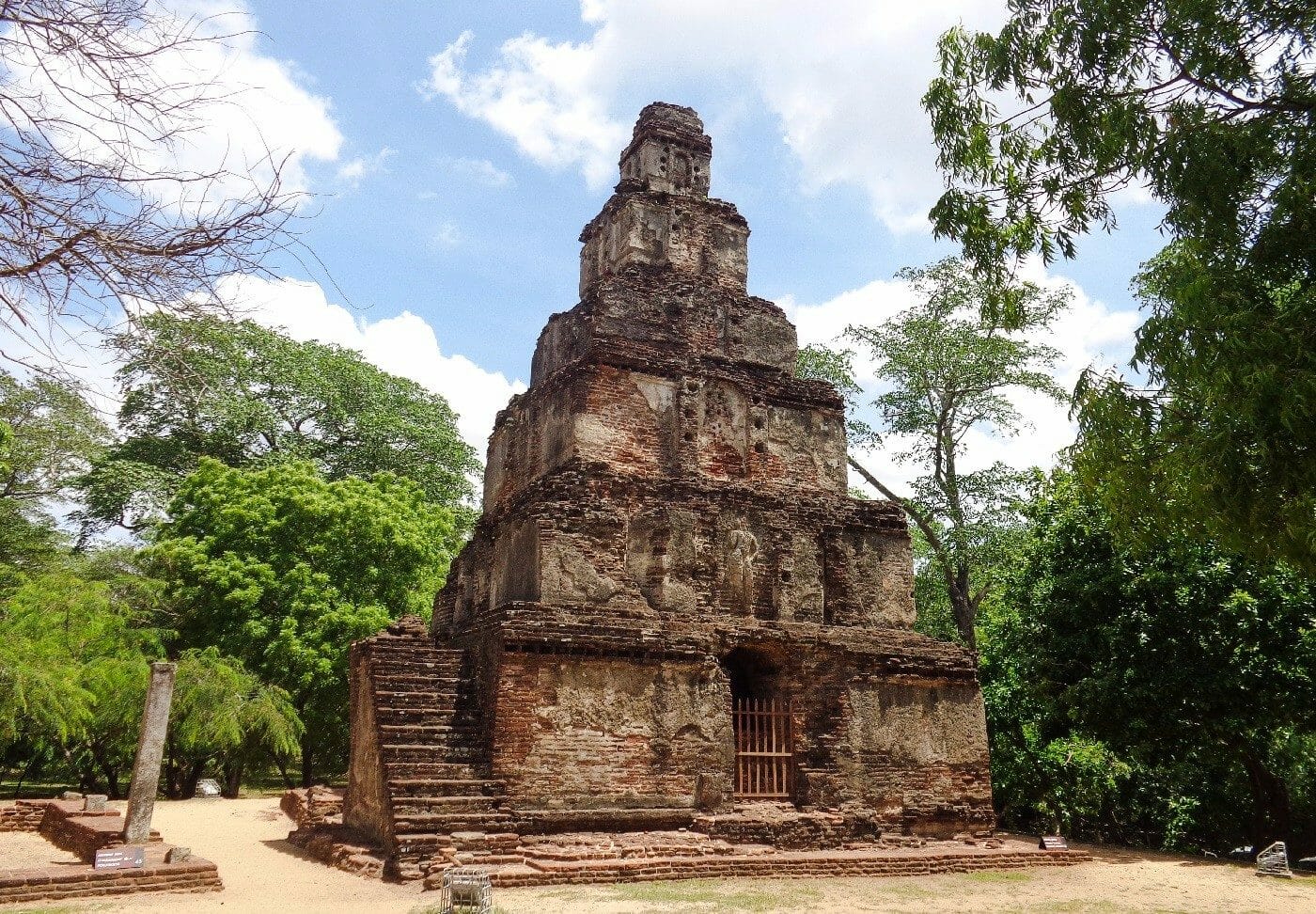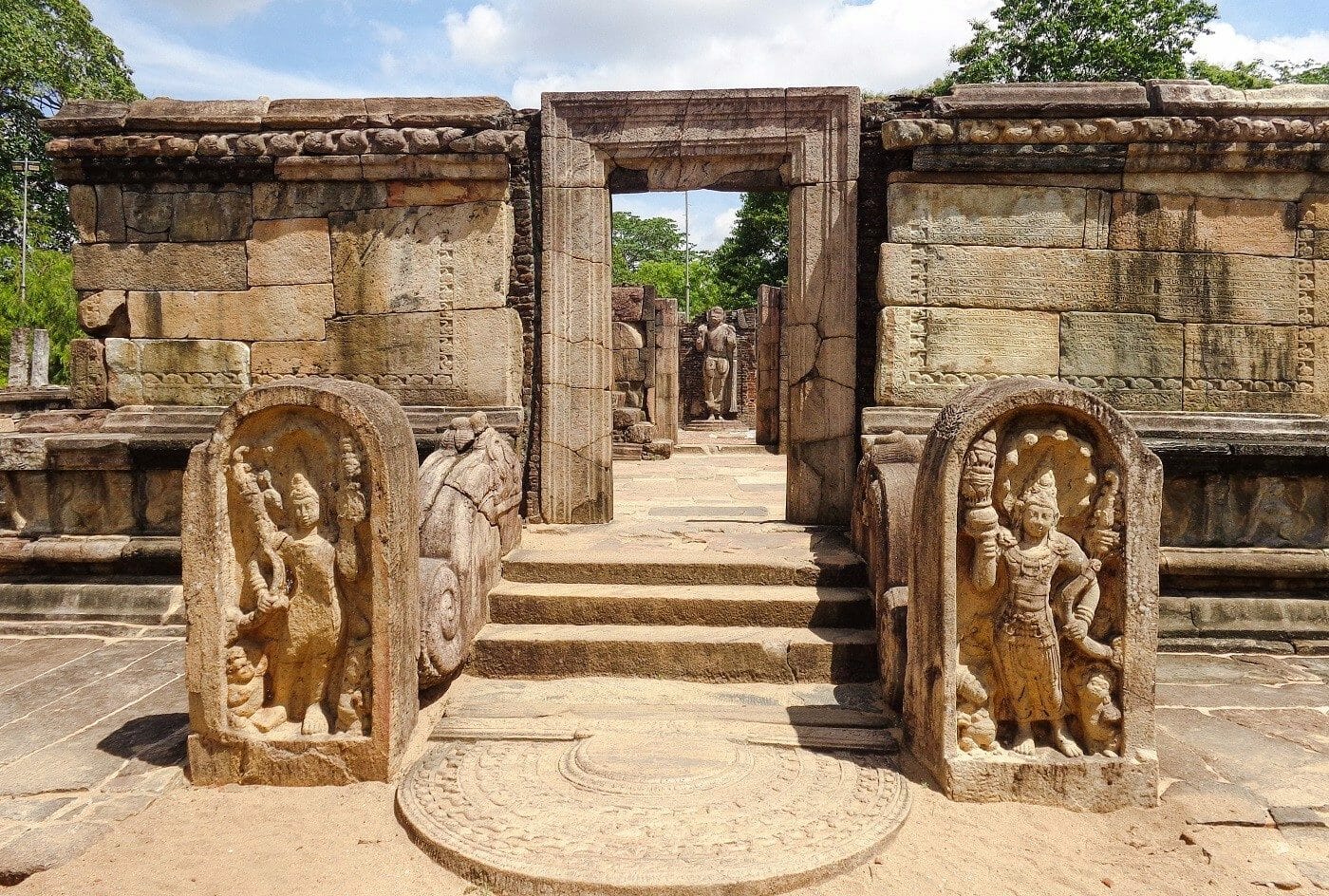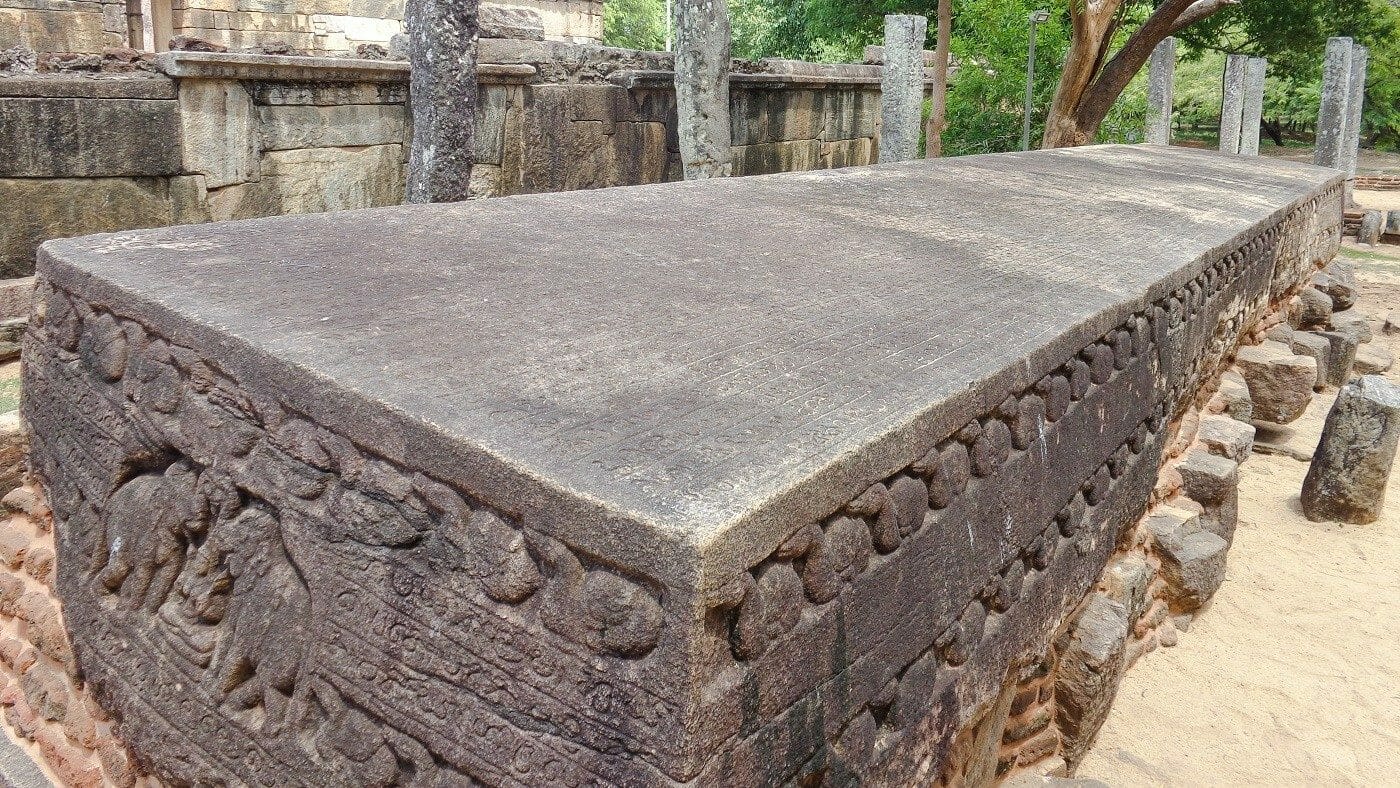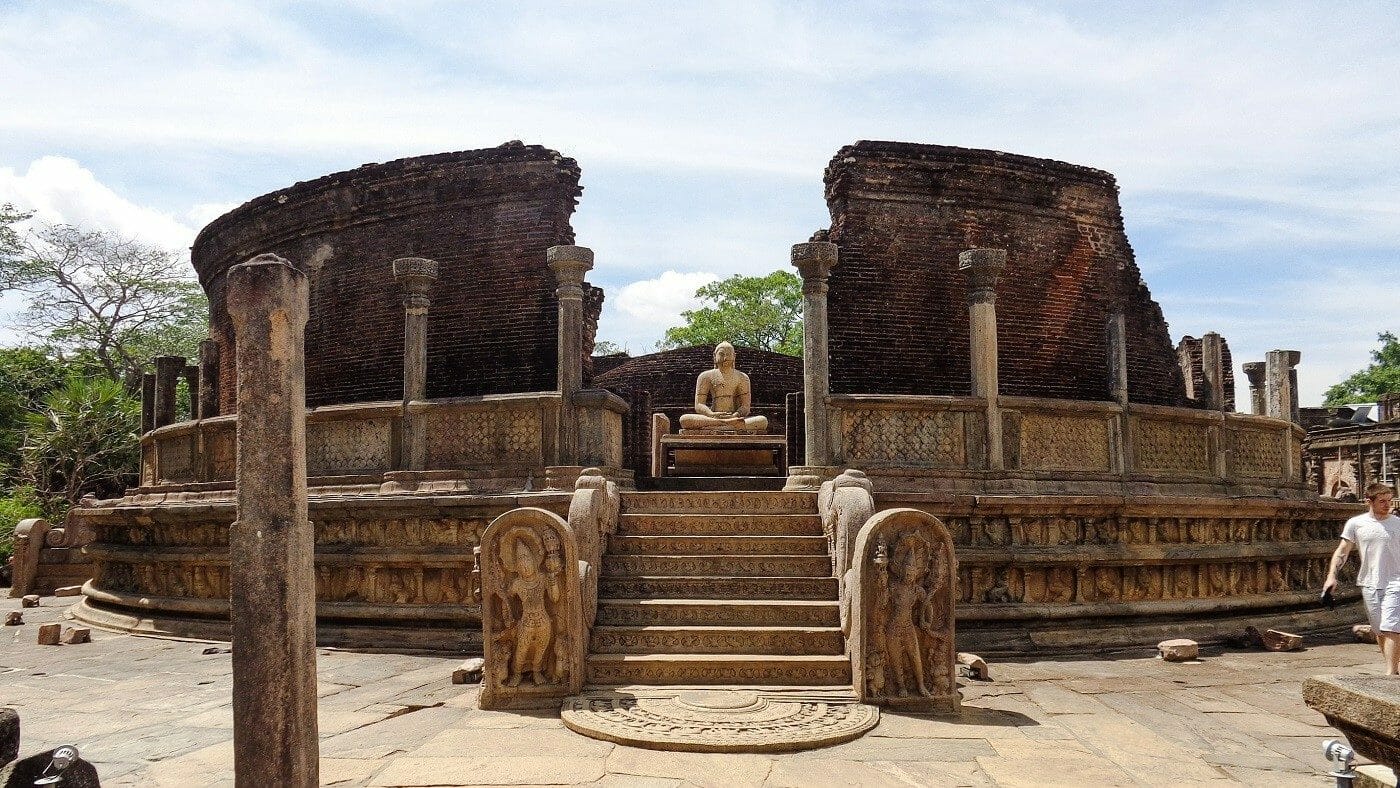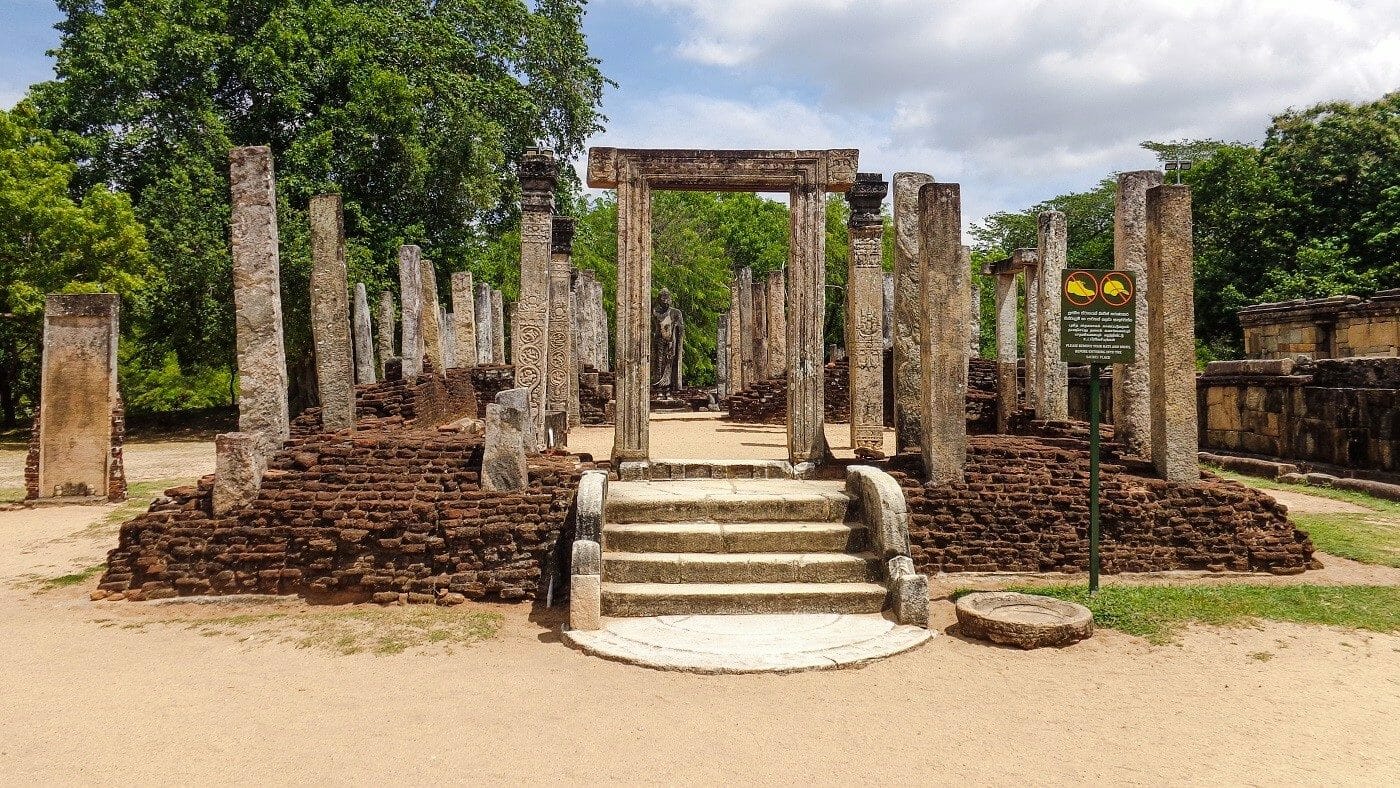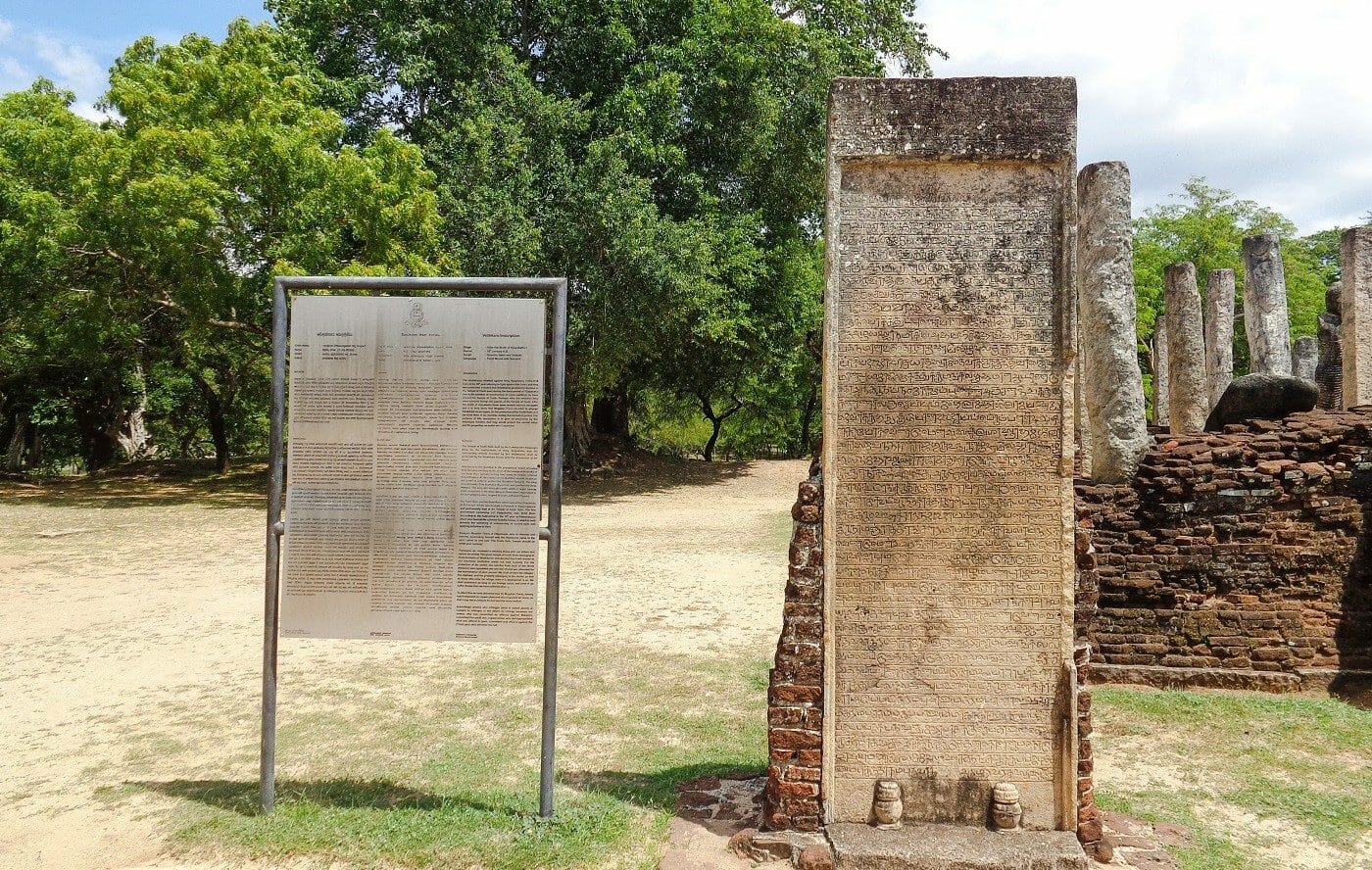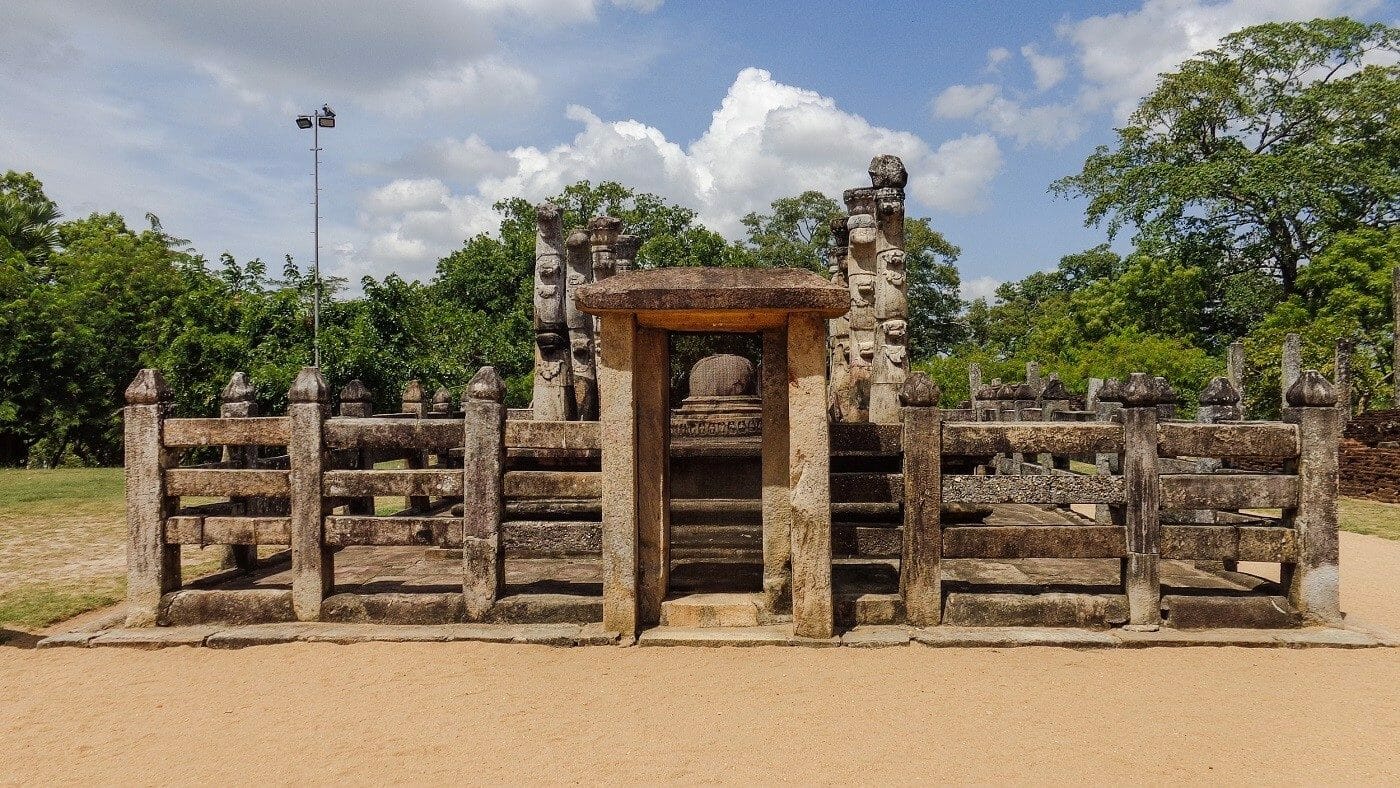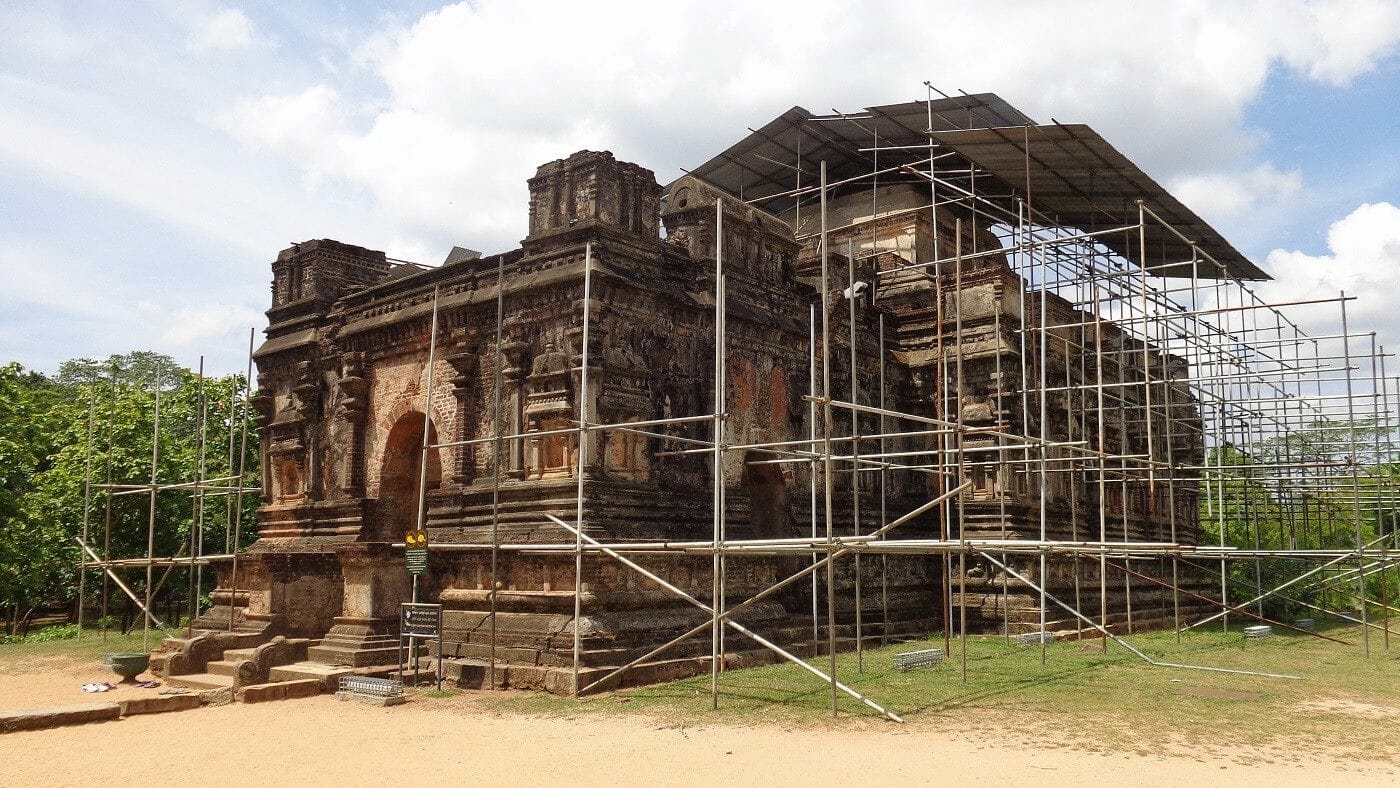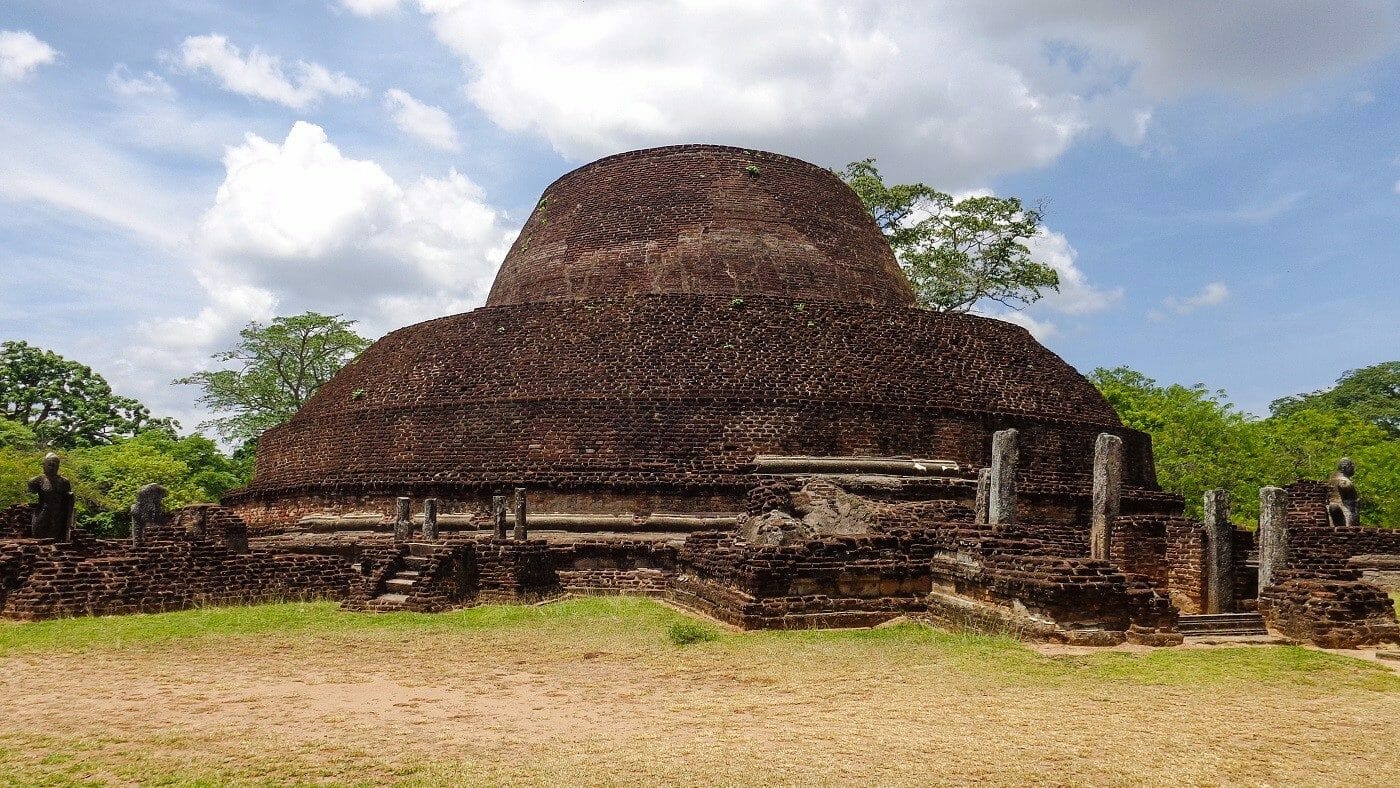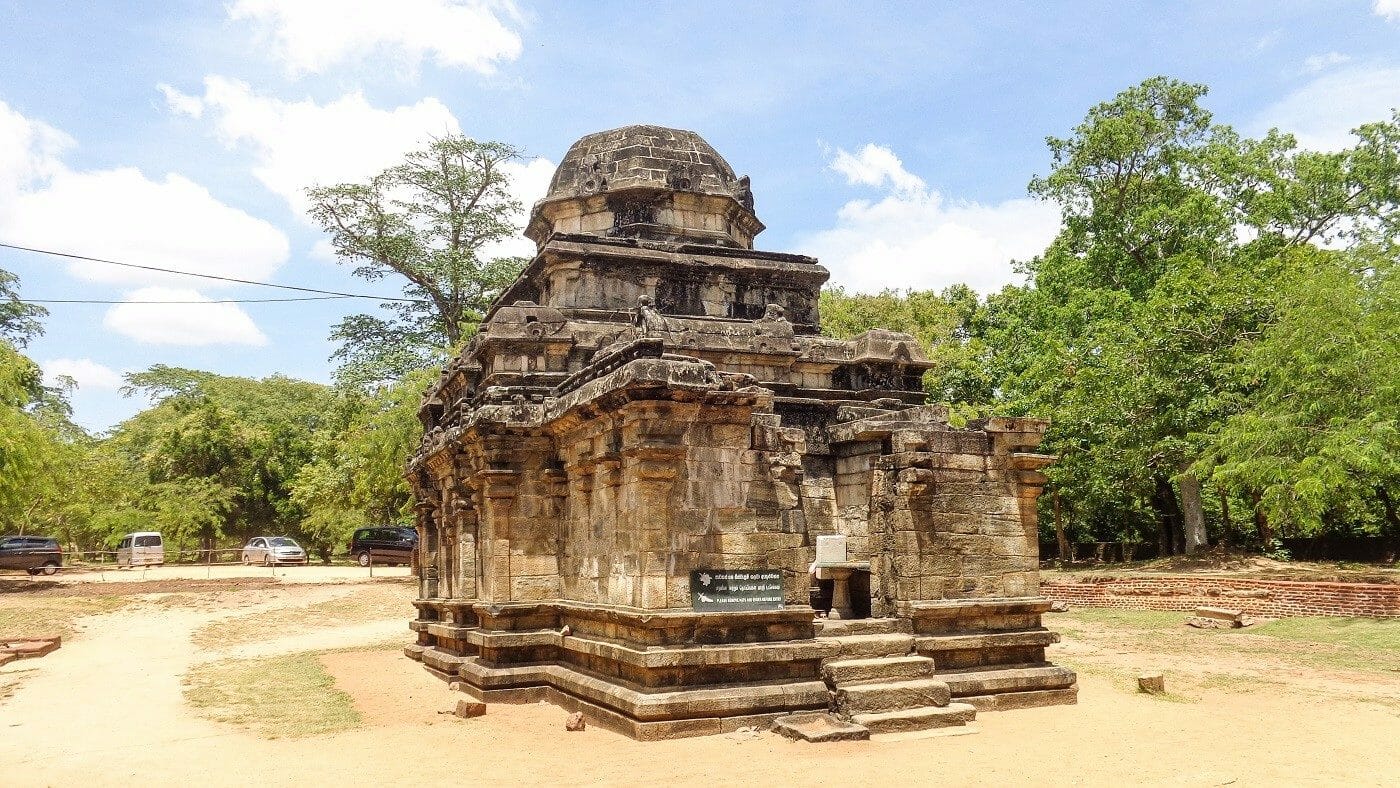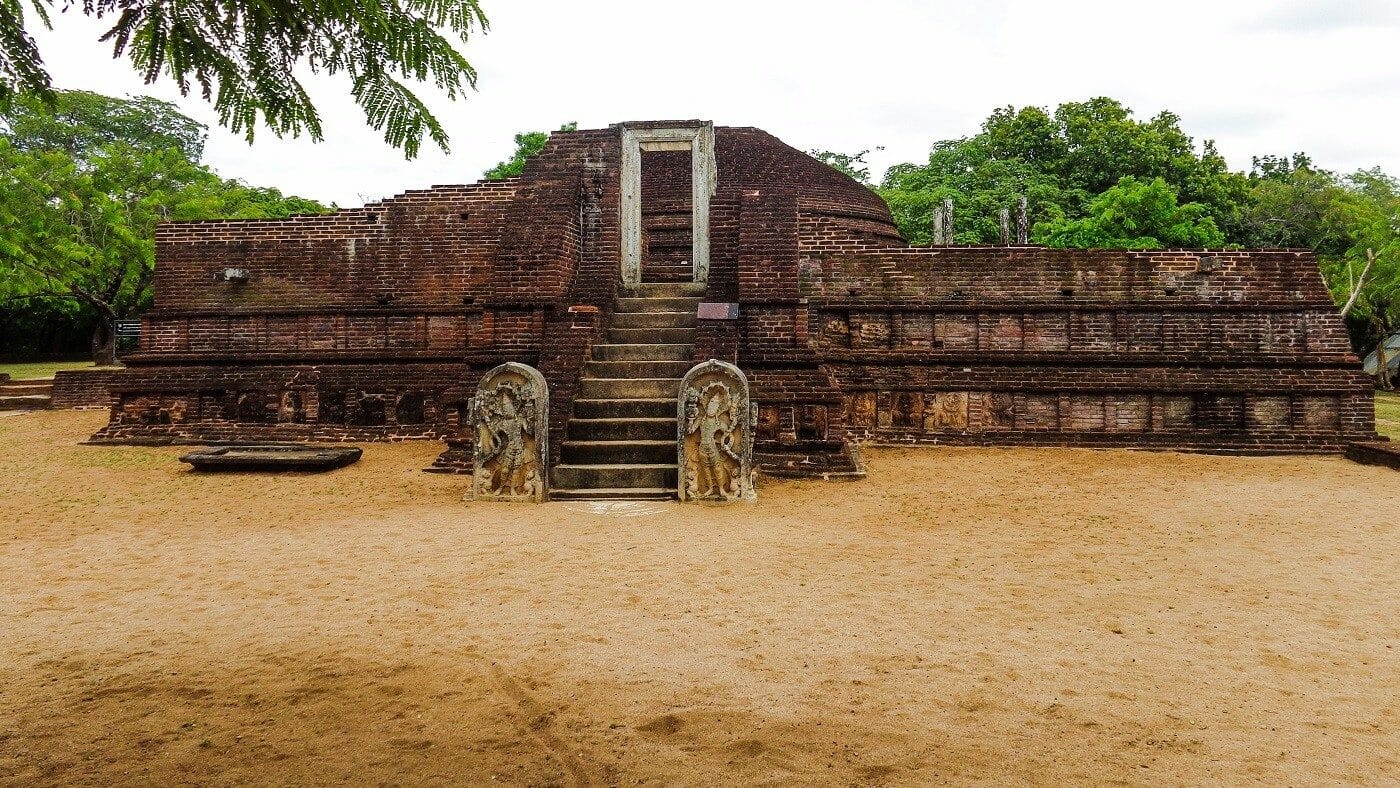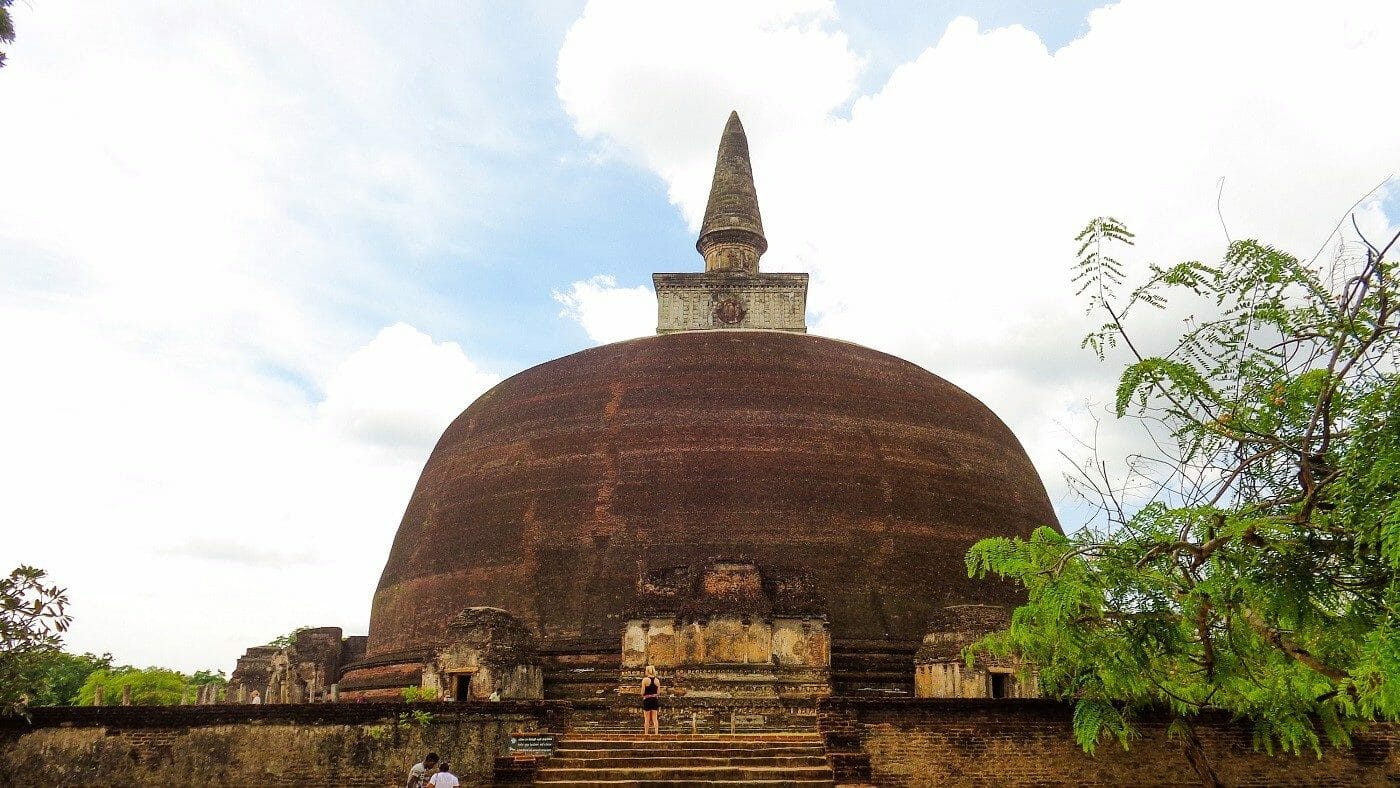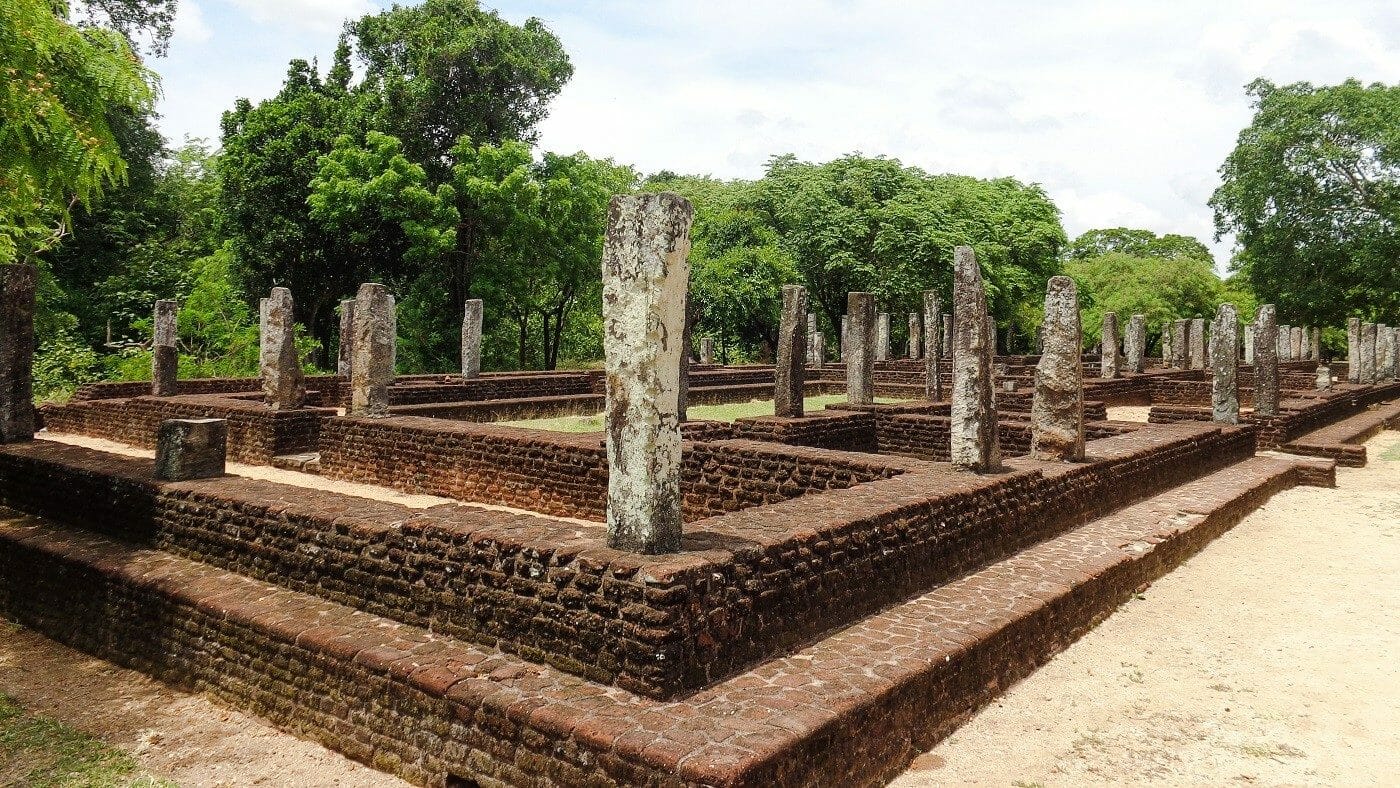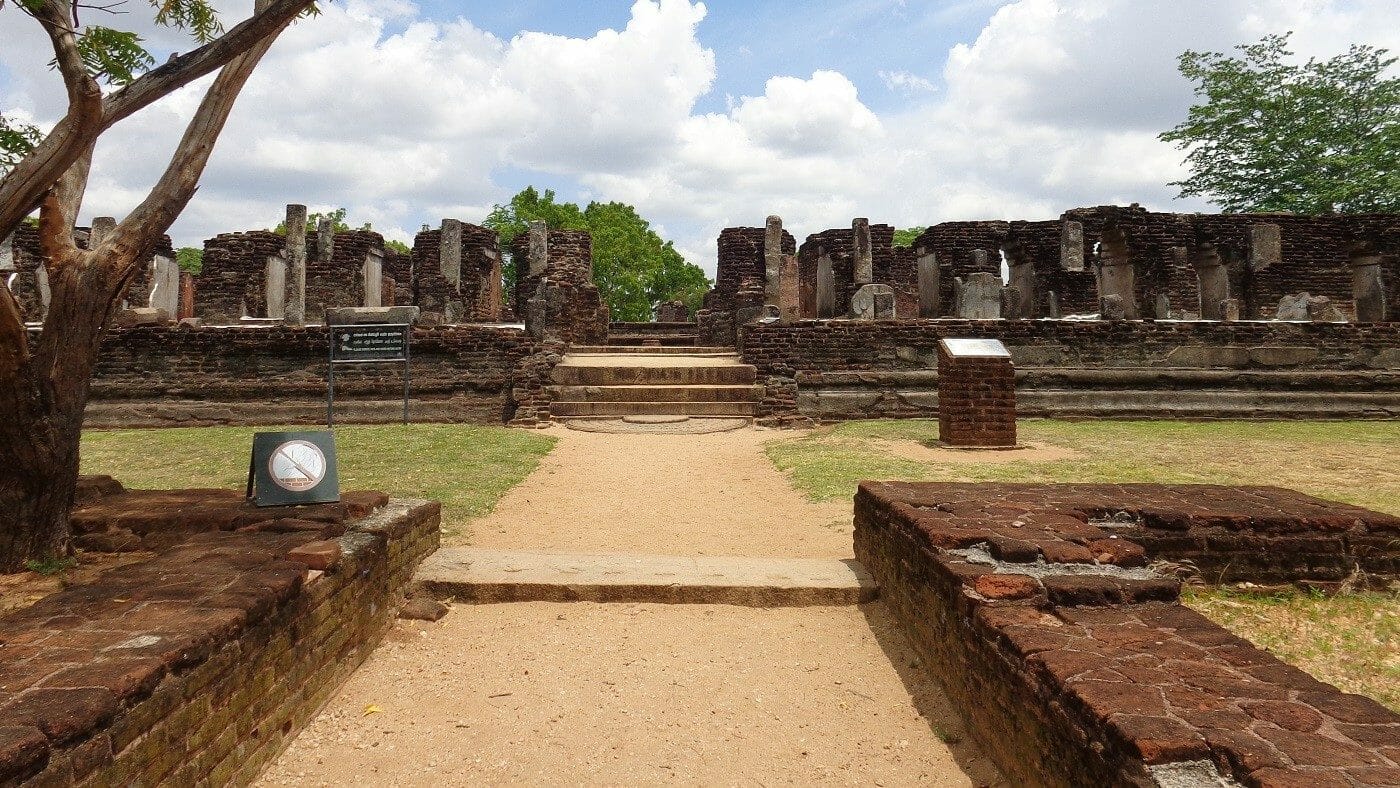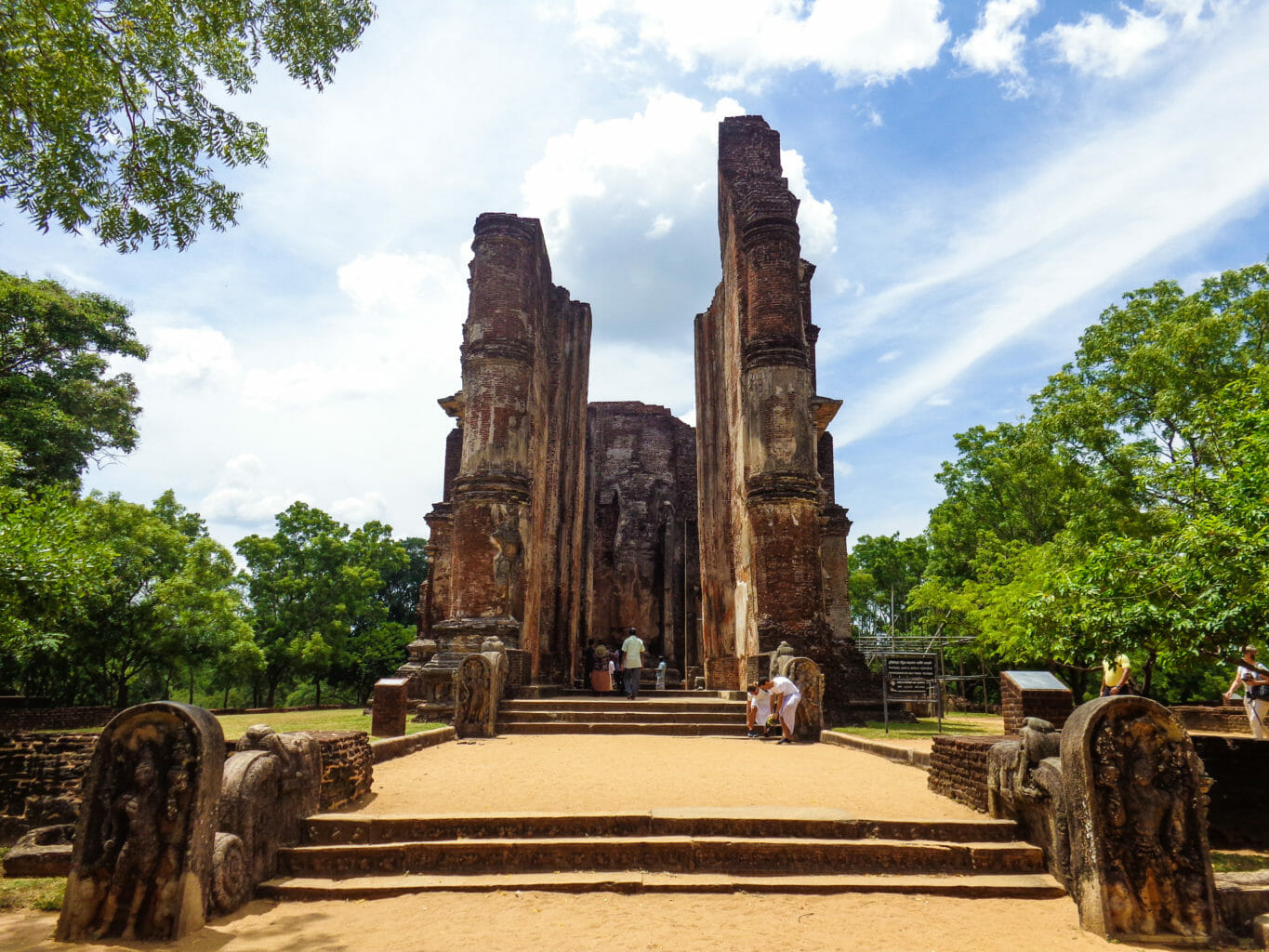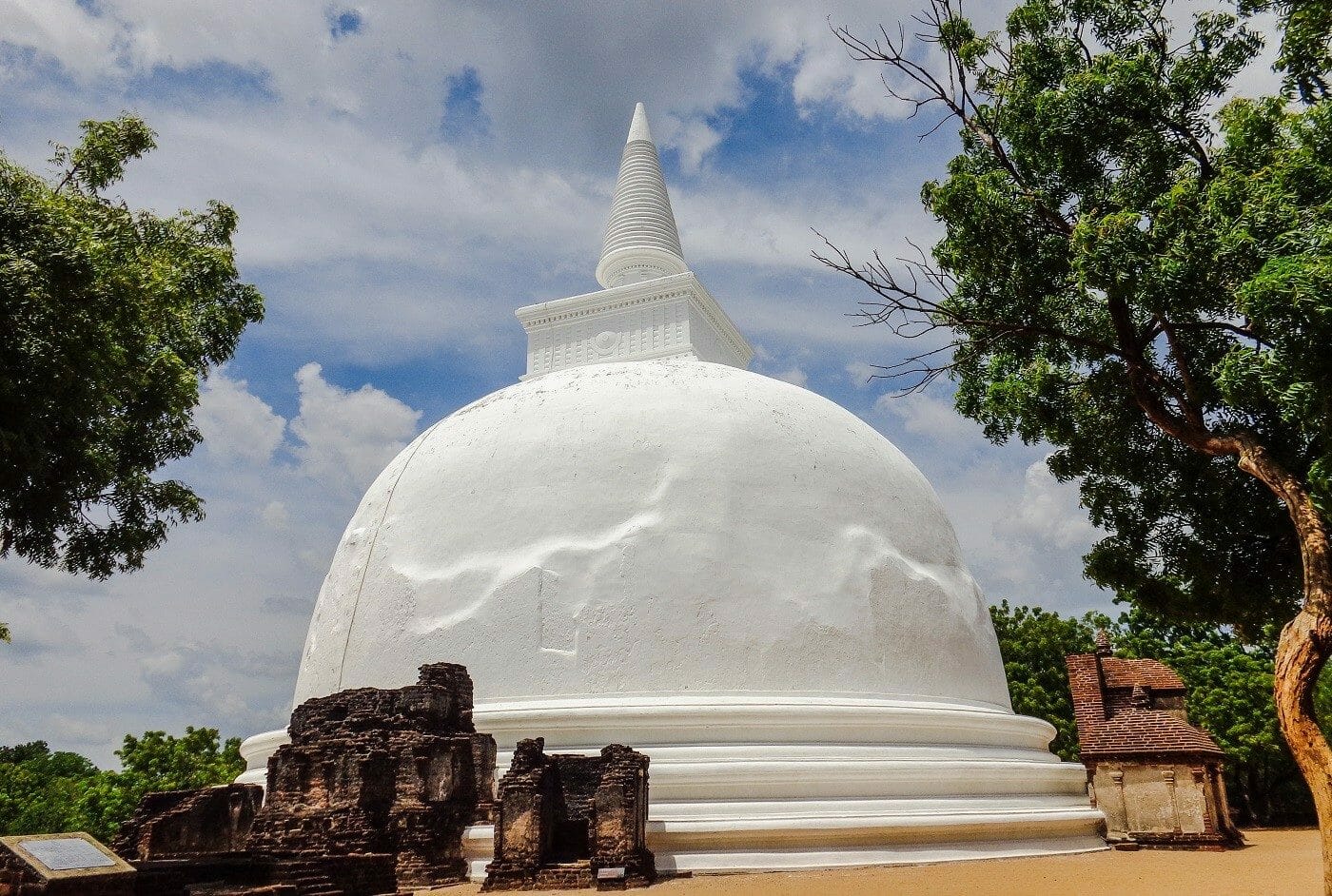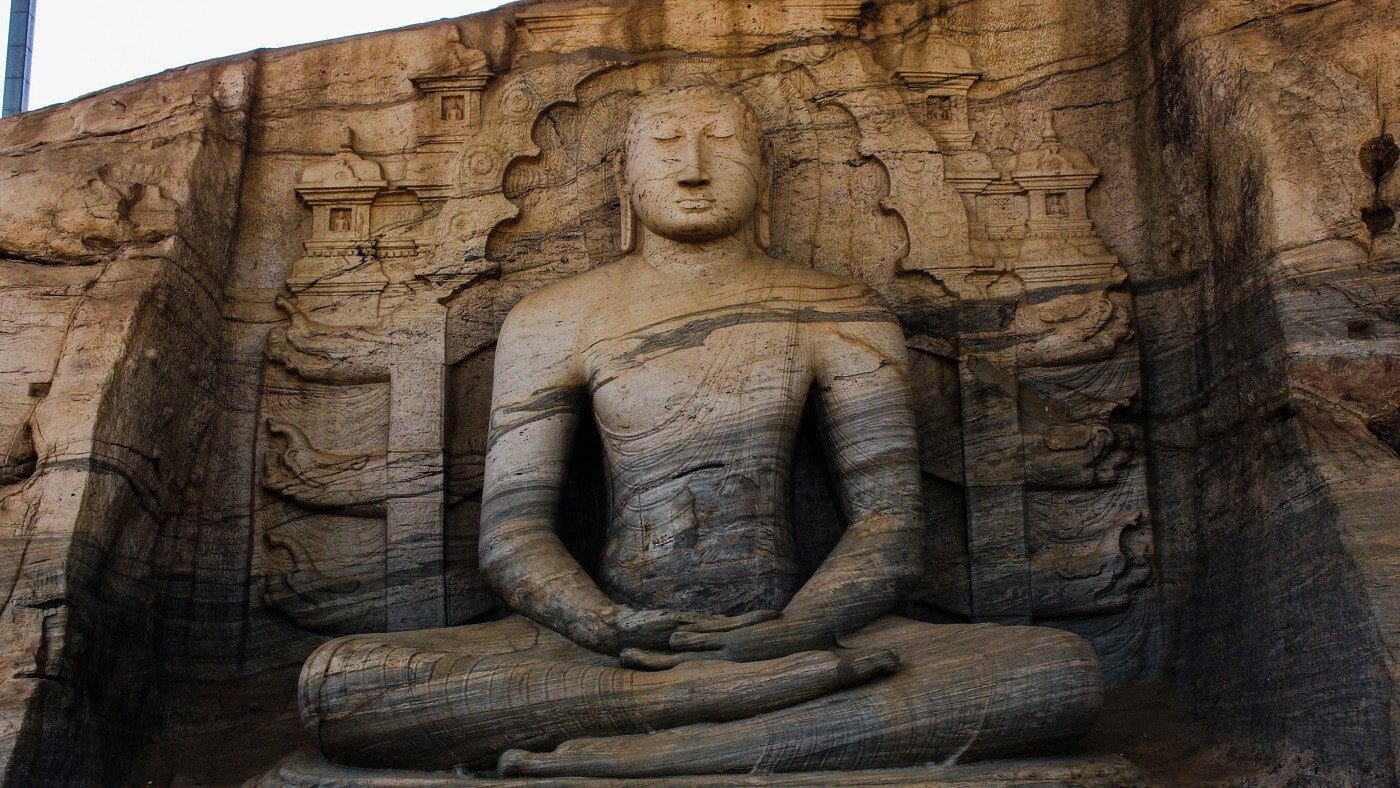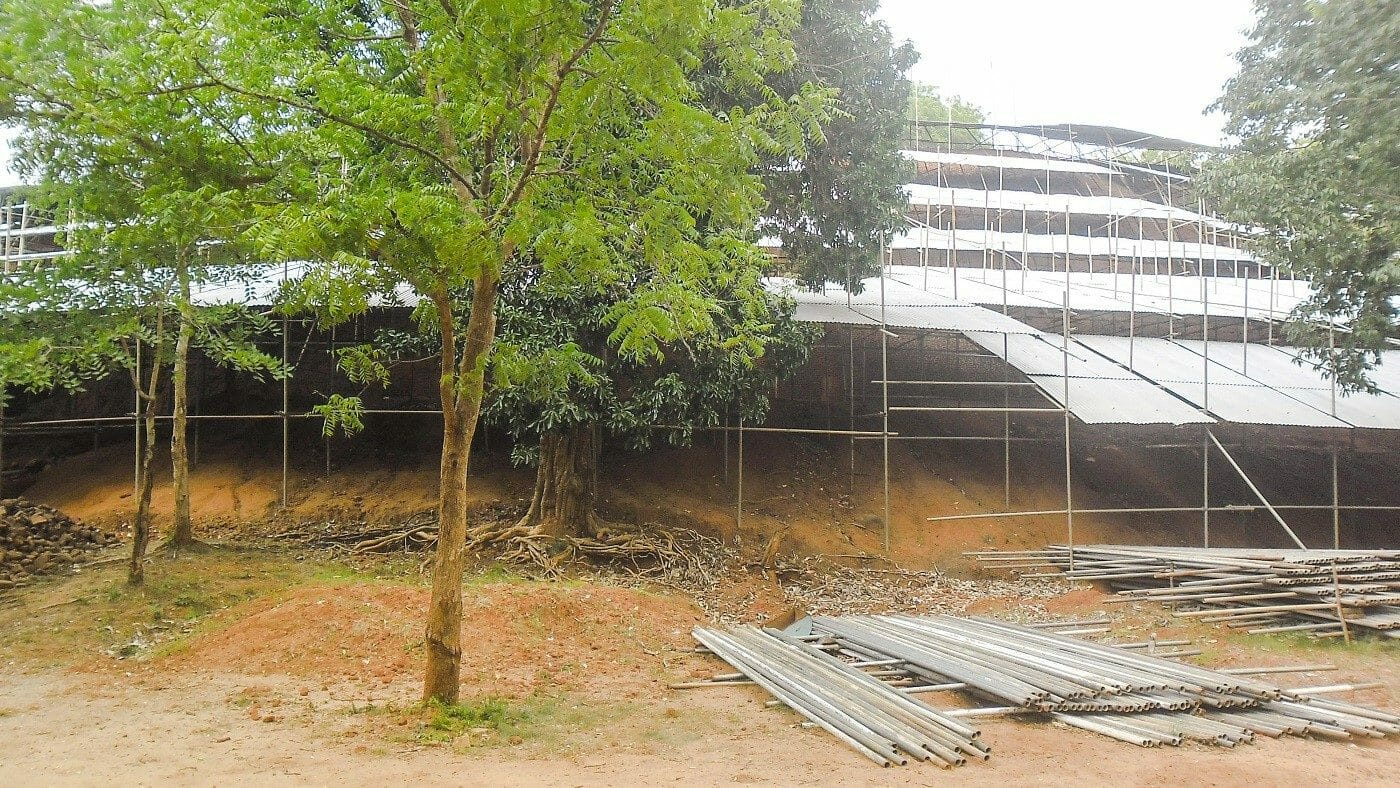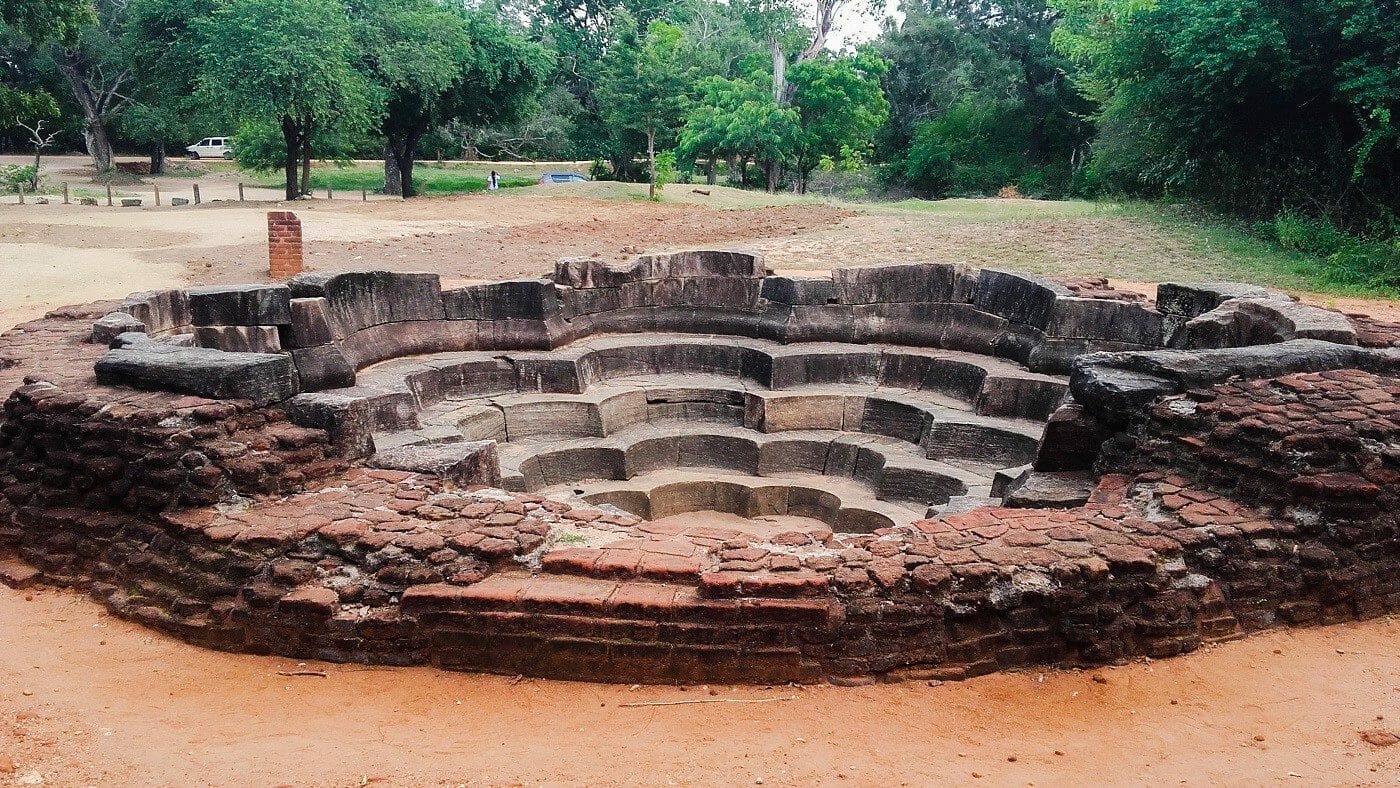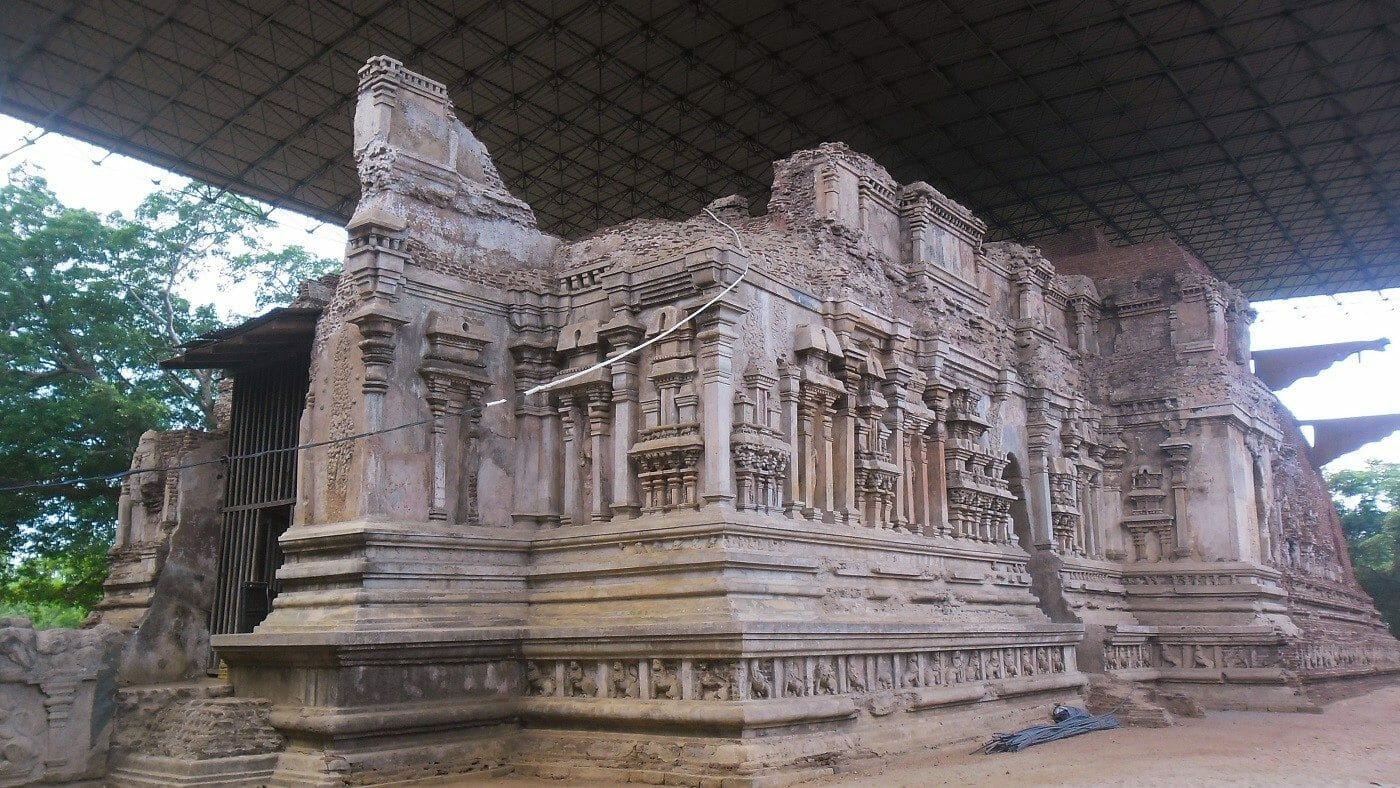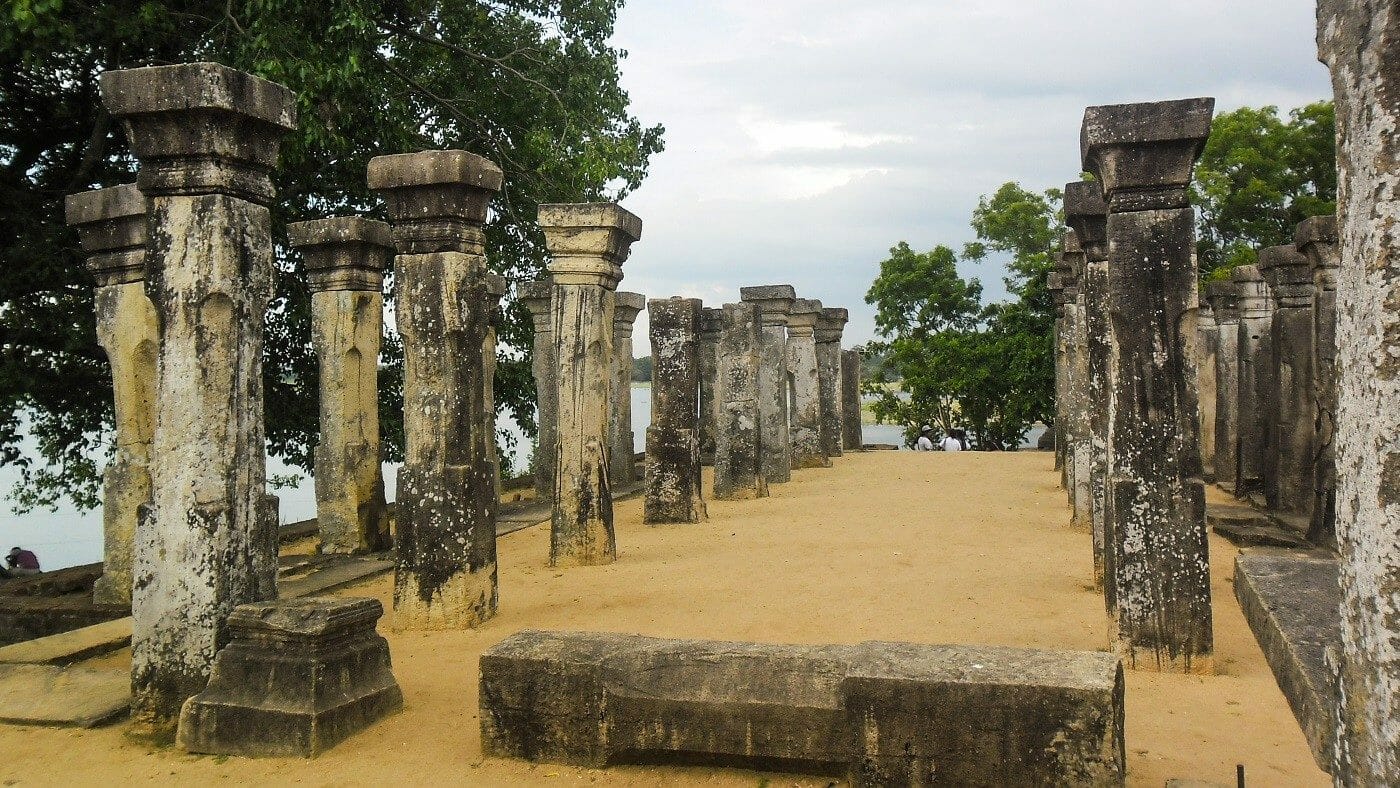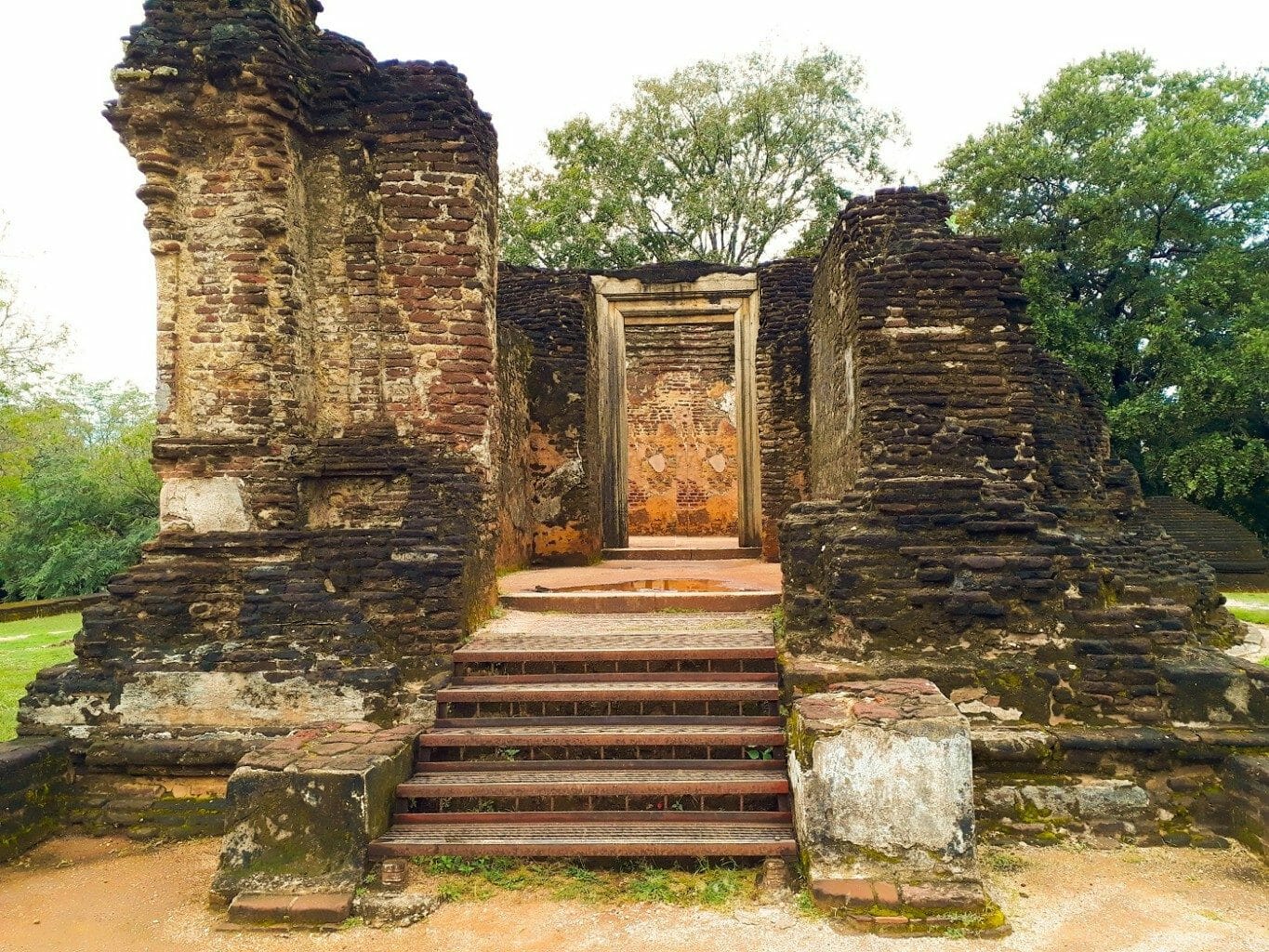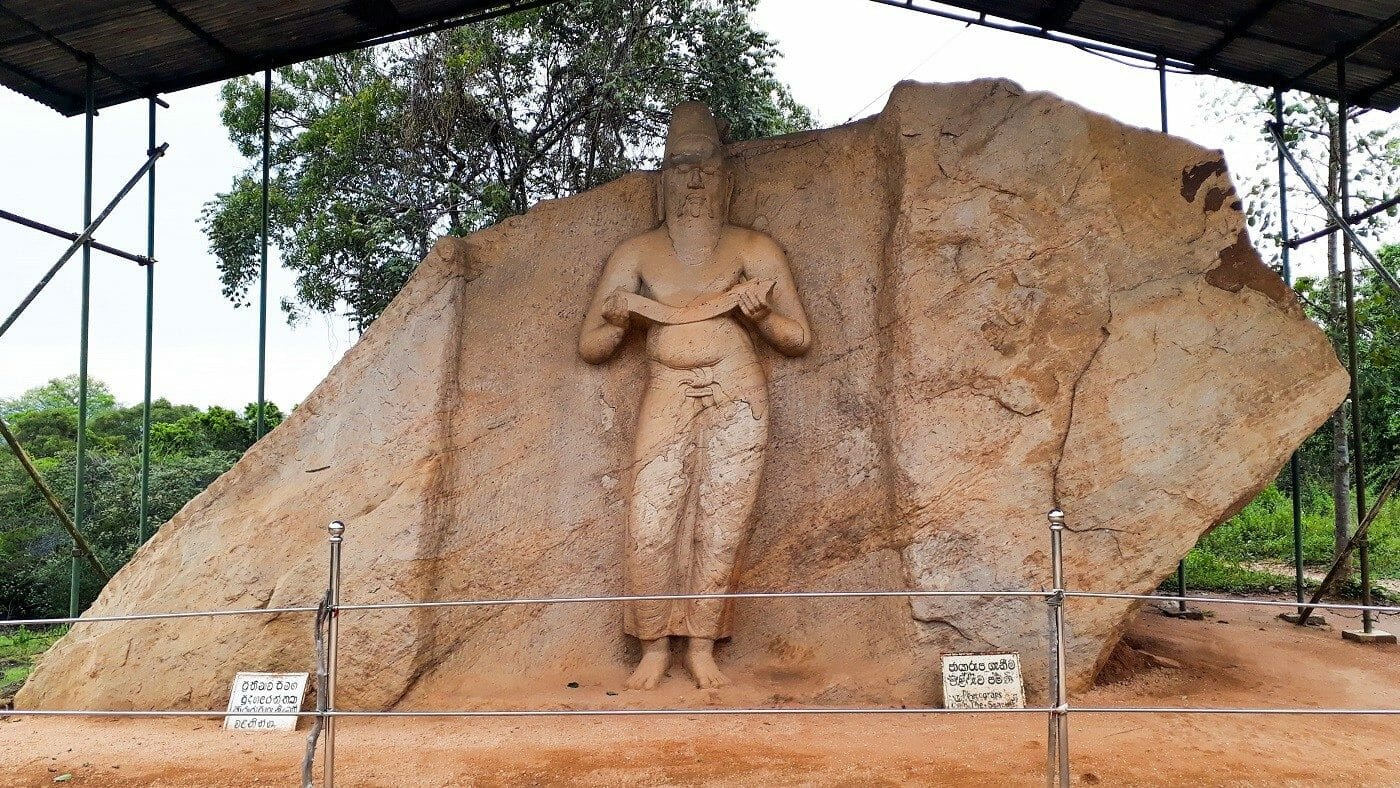Sri Lanka is home to one of the longest surviving civilizations on Earth. Many of its rich and resplendent heritages are spreads over a relatively small area called the Cultural Triangle made of Anuradhapura, Polonnaruwa, and Kandy districts. Polonnaruwa is the East part of the triangle. Today the ancient city of Polonnaruwa remains one of the best planned archaeological relic cities in the country. The Ancient City of Polonnaruwa has been declared a World Heritage site by UNESCO.
Polonnaruwa is the second ancient capital in Sri Lanka. It was first declared as the capital city by the King Vijayabahu I after defeating the Chola invaders in 1070 CE.
The Ancient City of Polonnaruwa has captured a great tourist attraction because of their archaeological monuments and buildings which have been constructed according to well-developed architectural designs.
The main site is located on the left side of the Maradankadawela-Habarana-Tirikkondiadimadu road if you are heading to the Polonnaruwa town. You can drive your vehicle to the site and there are a number of vehicle parks are provided nearby the monuments. You have to get a ticket for your vehicle. However, the bicycles are the best way to get around. You can hire bicycles from guest houses as well as from around the site.
After pass entrance of the main site first, see the monuments on your right side. The Palace of King Parakramabahu, Council Chamber of King Parakramabahu, and Kumara Pokuna is located in the right side and all the others are located in the left side.
01. Palace of King Parakramabahu
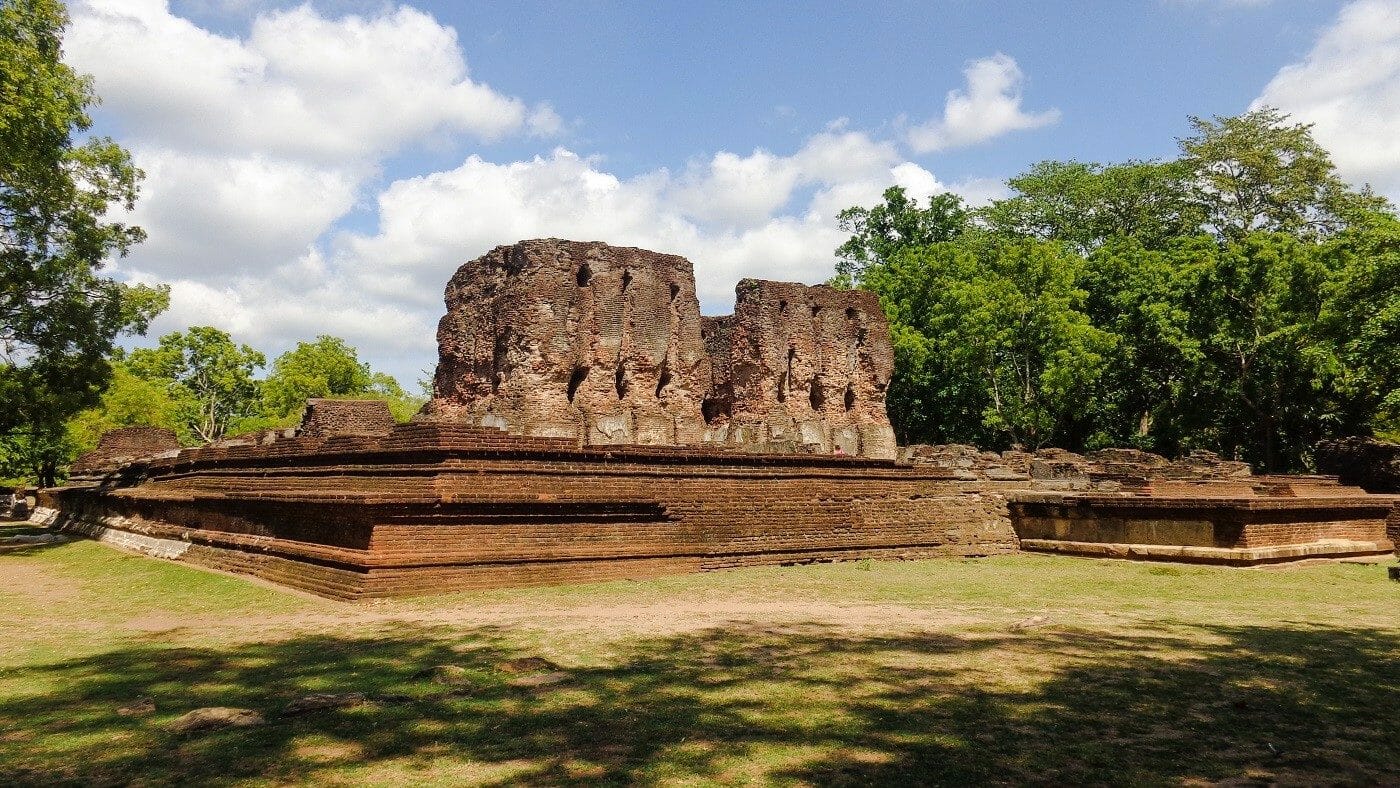 This was a 7 storeyed building with about 1000 rooms, built by the King Parakramabahu the Great (1153-1186). This place is considered to be the Palace of King Parakramabahu the Great. The Palace was called as Vijayotpaya or Vijayanta Prasada (the name of the Palace of God Sakra). Since it has consisted of 7 stories, the building also called “Sathbumupaya” (in Sinhala). The remaining huge walls with thickness over one meter and part of stairs and the foundation walls give you an idea about the size of the building. Read more…
This was a 7 storeyed building with about 1000 rooms, built by the King Parakramabahu the Great (1153-1186). This place is considered to be the Palace of King Parakramabahu the Great. The Palace was called as Vijayotpaya or Vijayanta Prasada (the name of the Palace of God Sakra). Since it has consisted of 7 stories, the building also called “Sathbumupaya” (in Sinhala). The remaining huge walls with thickness over one meter and part of stairs and the foundation walls give you an idea about the size of the building. Read more…
02. Council Chamber of King Parakramabahu
An inscription found on the upper level of the staircase identifies this building as the Council Chamber (The Raja Sabhawa in Sinhala) of the King Parakramabahu the Great who ruled the country for 33 years from 1153 – 1186 A.D. It is located in front of the Royal Palace of the King. There are two moonstones located at the beginning and the middle of the staircase. Both sides of the staircase are decorated with stone carvings. There are a number of beautifully carved stone pillars can be seen at the upper level of the building, Read more…
03. Kumara Pokuna
This pond or royal bath is presently known as “Kumara Pokuna” is believed to be the Pond named “Sila Pokkharani” mentioned Mahavamsa. The pond is located next to the Council Chamber of King Parakramabahu. According to Mahavamsa, the pond was built by King Parakramabahu the Great (1153 – 1186 A.D.). It is located such a way that it can get water from the Parakrama Samudraya tank and it has provided with outlets to drain off the used water. Read more…
04. Siva Devalaya (No. 01)
This Hindu Shrine is located just closure to the entrance on your left side. The ancient name or the builder of this shrine is not known. However, according to the style of architecture, this may belong to the 13th century A.D.
05. Sathmahal Prasadaya
Sathmahal Prasadaya is a unique type of 7 storied ancient building in Dalada Maluwa premises. The Sinhala name “Sathmahal” has the meaning of 7 storied. The building is completely built with bricks and it takes the shape of a pyramid. The base of the building is the shape of a square with side length of 35 ft. There are four doors with arches on each side. Since these type of buildings have been found in Northern Thailand, this is also considered as a monument which confirms the foreign affairs in ancient Sri Lanka. Read more…
06. Hatadage
Hatadage was built by the King Nissanka Malla (1187-1196 A.D.). This is also located int he Dalada Maluwa premises. This had been used to place the sacred tooth relic of Lord Buddha. According to historical sources, the shrine has built in sixty hours. The English translation of the Sinhalese word “Hata” is sixty, represent the duration of the construction period and the word “Dage” has the meaning of “relic shrine”. The remaining features of the building for today, evidence that the shrine was originally a two-story building. The shrine is 120 ft in length and 60 ft in width. Read more…
07. Gal Potha (Stone Book)
Gal Potha (Stone Book) is a giant stone inscription located in the Dalada Maluwa premises of main archaeological site in Polonnaruwa District, Sri Lanka. It is a work of King Nissankamalla (1187-1196) and it is the largest stone inscription discovered so far. The inscription itself tells that this large stone was transported from Minintale, some hundred kilometers away from Polonnaruwa. It describes the genealogy, heroic and altruistic deed of King Nissankamalla. The letters of the inscription were embossed with molten iron. The figure of the woman on the side face of the stone on whom two elephants are sprinkling water has been identified as Goddess Gajalakshmi (Goddess of Prosperity). Read more…
08. Vatadage (The Stupa House)
Vatadage is another great monument located in the Dalada Maluwa premises, belongs to the Polonnaruwa Kingdom. It is a structure which is built encircling the stupa for protection. It is believed that the structure was built during the reign of King Parakramabahu I (1123–1186) to hold the Sacred Tooth Relic of Lord Buddha. However, this has been renovated during the reign of King Nissanka Malla (1187 – 1196). This is the most famous Vatadage among the other Vatadage structures found in Sri Lanka. Read more…
09. Atadage
Atadage was constructed by King Vijayabahu I to place the Sacred Tooth Relic in the 11th century. It is located in the Dalada Maluwa premises. The name “Atadage” has the meaning of “house of eight relics”. What remains here today are the foundation and 54 stone pillars. The Tooth Relic has been kept on the upper floor made out of wood on top of these stone pillars. Read more…
10. Velaikkara inscription
Velaikkara Inscription is an ancient inscription carved on a stone located in the Dalada Maluwa premises. The purpose of this inscription is to give an assurance by the Velaikkara soldiers that they would protect the sacred relics and the properties no matter what happened. Read more…
11. Nissanka Latha Mandapaya
According to the inscriptions found, this pillared structure has identified as the Nissanka Latha Mandapaya. It is also located in the Dalada Maluwa premises. This building was constructed by the King Nissankamalla (1187-1196 A.D.). According to an inscription, this is the place where the King Nissankamalla listened to Pirith Chanting (a recitation or chanting of the word of the Lord Buddha). Read more…
12. Thuparama Image House
This image house is also located in the Dalada Maluwa premise. Although it is known as Thuparama Image House, the ancient name or the builder is not known. The image house is categorized as Gedige type as its walls and the roof is completely built with bricks. This is the only monument among those in Polonnaruwa where the roof is well preserved. Read more…
13. Pabalu Vehera
According to chronicles, the Pabalu Vehera had built by Rupavati, the Queen of Parakramabahu the Great (1153 – 1186 A.C.). The present name Pabalu (meaning, beads), has given to the stupa because of a large number of beads found in the vicinity of this monastic complex. Around the stupa, there are a number of image houses with statues with different postures. A reclining Buddha statue has been kept in the largest image house. Read more…
14. Siva Devalaya (No. 02)
This Siva Devalaya is the oldest Hindu shrine found in the Ancient City of Polonnaruwa. It was built by the king Raja Raja I (985 – 1014 A.D.). According to an inscription found, this place has been dedicated to the consort of the King. Read more…
15. Menik Vehera
Menik Vehera is an ancient monastery. The history of this place is not known. However, according to the architectural features, it is assumed to belong to the 8-9 centuries A.D. This monastery consists of a Stupa, image houses, a Bodhi – tree shrine, refectory, monk’s dispensary and cells. The stupa here is of a rare type. Read more…
16. Rankoth Vehera
Rankoth Vehera is the largest stupa in the ancient city of Polonnaruwa and the 4th largest in Sri Lanka. It is about 33m in height and 170m in diameter. It was built by the King Nissanka Malla (1187-1196). This stupa has constructed with the same design as the Ruwanwelisaya in the Sacred City of Anuradhapura. According to a stone inscription found in the vicinity of the stupa, it was initially named as “Ruwanweli Stupa”. However, later it has come to be known as Rankoth Vehera. Read more…
17. Monastic Hospital
This monastic hospital is located in the Alahana Pirivena premises. The archaeological excavations have confirmed this building as a monastic hospital constructed in the 12th century. A medicine trough (Behet Oruva) made of stone is still can be seen in one room. This medicine trough had been used for treating patients by immersing in herbal oil. Several surgical and medical instruments also have been discovered during the excavations at this site. There are two main sections in this building namely living and treatment sections. Read more…
18. Baddhasima Prasadaya
Baddhasima Prasadaya is the Pohoyageya or Uposathagharaya (Chapter House) of the monks of Alahana Piriwena where they rehearsed the codes of discipline (Especially the pati mokka). The remaining pillars and brick walls of this place suggest that there had been a multi-storied building and according to the Mahavamsa, there had been a twelve storied building. As such, this may be the largest of the Uposathaghara in the Island. Read more…
19. Lankathilaka Viharaya
Lankathilaka Viharaya is a vaulted type (Gedige) image house. It was built by King Parakramabahu the Great (1153-1186 A.D.). This image house is considered to be the largest image house built in ancient Sri Lanka. There is evidence that the image house has been renovated during the Dambadeniya Period (13th century A.D.). Read more…
20. Kiri Vehera
This stupa is popularly known as Kiri Vehera It is also a part of the archaeological site called Alahana Pirivena. The origin of this stupa not exactly traced yet. However, it is speculated that this was done by Queen Subhadra, a consort of King Parakramabahu the Great (1153-1186). This is the second largest stupa in Polonnaruwa. Read more…
21. Gal Viharaya
Gal Viharaya (or Rock Monastery), originally named as Uttararamaya was created during the reign of King Parakramabahu I in the 12th century. The temple is famous due to the four statues of Lord Buddha carved into the face of granite rocks. The four statues included a large statue of seated Buddha, a small statue of seated Buddha, standing figure of Buddha and a reclining figure of Buddha. Read more…
22. Demalamaha Seya
Demalamaha Seya is an ancient stupa built by the King Parakramabahu (1153-1186). As it was described in the ancient chronicle Mahawansa, the stupa named “Demalamaha Seya” was with a height of approximately 1300 cubit (594.36 m). Presently this brick built stupa has a perimeter of 600 m and height of 25.65 m. The excavation and the conservation project of the Demalamaha Seya were commenced by the Central Cultural Fund in 2014. Read more…
23. Lotus Pond
Nelum Pokuna (Lotus Pond) is an ancient pond with a unique design made by ancient Sri Lankan architects. It is located on the left side of the road to Thiwanka Pilimage. The pond got its name because of its design which looks like a bloomed lotus flower. This pond is somewhat small compared to the other ponds found in the ancient city of Polonnaruwa and it is built with stones. The structural design of the Nelum Pokuna Theatre also has been inspired by this Lotus Pond. Read more…
24. Tivanka Image House
Tivanka Image House is identified as the image house of Jetavanaramaya Monastery built by the King Parakramabahu the Great (1153 – 1186). The name Tivanka (means three bends) is given due to its giant Buddha image is bent at three places, namely shoulder, hip, and knee. The image house is famous due to the paintings on its interior walls. The paintings belong to the 12th century and they depict certain incidents from Jataka Stories and the life of Buddha. Read more…
25. Council Chamber of King Nissankamalla
This building has been identified as the Council Chamber of King Nissankamalla (1187 – 1196 A.D.). An inscription on the lion figure made of the stone itself identifies as the throne of the king. And the inscriptions on the pillars indicate the seating arrangement of the respective ministers and state officials. This Council Chamber is located in the Dipauyana premises, which is on the right side of the Maradankadawela-Habarana-Tirikkondiadimadu road if you are heading to the Polonnaruwa town You can access it through the Archaeological Museum or by the footpath (Royal Palace Pathway) which is starting in front of the entrance to the main archaeological site. Read more…
26. Pothgul Vehera
The Sinhalese name “Pothgull” has the meaning of “place to store books”. As such, with the other historical evidence, this ancient place has been identified as the oldest Buddhist library complex in the country. It was built by the King Parakramabahu the Great (1153-1186). Pothgul Vehera is located closer to the Parakrama Samudraya. You can reach this location through the Bund Road. Read more…
27. Statue of King Parakramabahu the Great
This beautifully carved ancient statue is located near the Pothgul Vehera. the identity of this statue is not yet confirmed and some believed it to be the statue of King Parakramabahu the Great (1123–1186). And others believed that it is the statue of great Saint called Pulasthi or Kapila. The statue is about 3.5m tall and carved into a large rock boulder. Read more…
